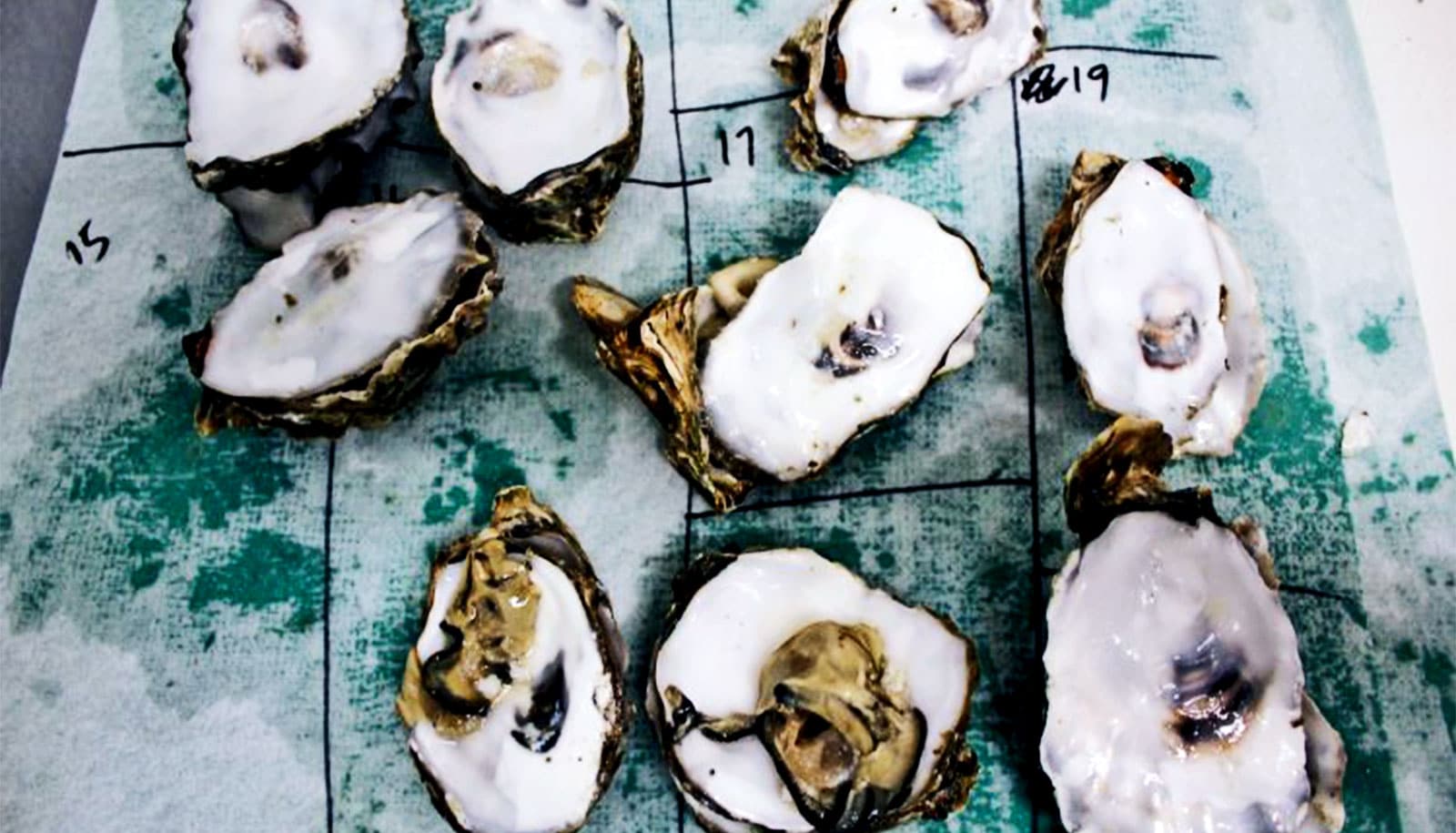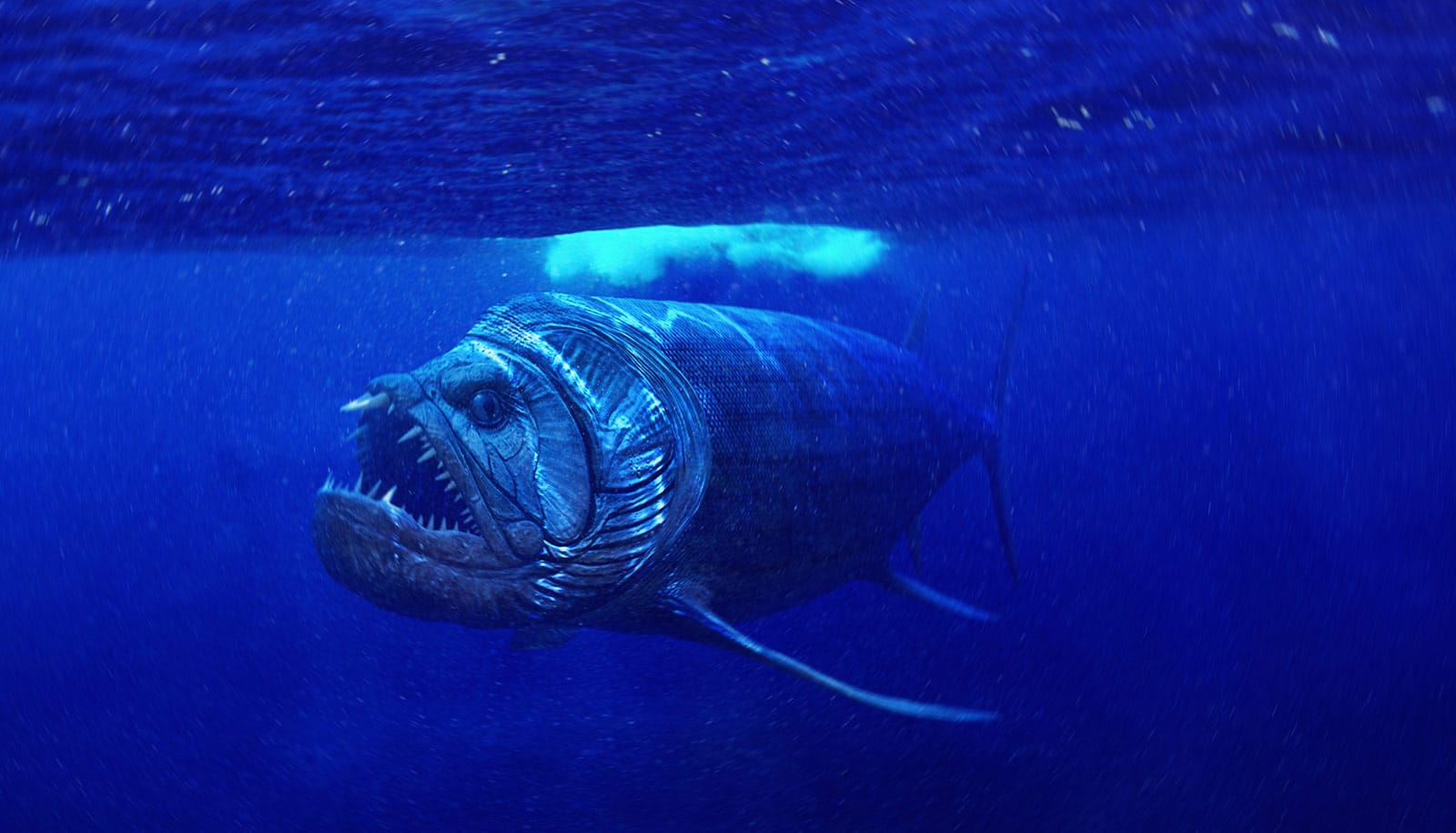Ocean acidification affects the ability of some oysters to pass down “memories” of environmental trauma to their offspring, a new study shows.
As oceans absorb more carbon dioxide, they become increasingly acidic and shift the delicate balance that supports marine life. How species will cope with ocean acidification and the other consequences of global climate change remains largely unknown and could have sweeping consequences.
“Warming and acidifying oceans negatively influence many marine species. However, some species that live in extreme environments, such as the intertidal, may be more resilient than others to these changes,” says Laura Spencer, a graduate student in aquatic and fishery sciences at the University of Washington and a lead author of two new papers.
“Some species may even be able to pass on memories of harsh conditions to their offspring, making them more capable of surviving in similarly harsh environments.”

Oyster resilience
Researchers studied two species of ecologically and commercially valuable oysters found throughout Puget Sound: the Olympia and the Pacific. Although oyster larvae are sensitive to acidifying oceans, adults commonly occur in intertidal areas and estuaries where they must endure constantly fluctuating water conditions.
It is this hardiness that has researchers hopeful that oysters can withstand an increasingly acidic ocean. If they can pass down their resilience to stressors to their offspring, it could promote an increased tolerance among the future population.
In the first study, which appears in Ecological Applications, the researchers exposed Olympia oysters to a combination of elevated temperatures and acidified conditions during winter months, mimicking what might happen under climate change.
The higher water temperatures caused the oysters to spawn earlier; however, these effects were canceled out when combined with acidified conditions. Researchers then reared and transplanted the exposed oysters’ offspring to four estuaries in Puget Sound. They observed that the offspring whose parents were exposed to acidified conditions in the lab had higher survival rates in two of the four bays.

“We found that Olympia oyster adults were relatively resilient to acidification and warming when exposed during the winter,” says Spencer. “Most interestingly, we found evidence that adult exposure to acidified conditions can benefit offspring by improving survival.”
This carryover effect demonstrates that the experiences of oyster parents have a direct impact on how their offspring perform, and juvenile oysters whose parents have been pre-conditioned by similar stressors may have more resiliency in certain environments.
Good news, bad news
In the second study, published in the Journal of Shellfish Research, researchers similarly exposed adult Pacific oysters to acidified conditions in the lab. They then placed the oysters back in ambient water to recover before spawning. Embryonic and larval offspring of female oysters exposed to these experimental conditions experienced poorer survival than a similar control group.
“The conditions one generation of Pacific oysters experience can affect how their children perform,” says lead author Yaamini Venkataraman, a graduate student in aquatic and fishery sciences. “Even if oysters are not in stressful conditions when they reproduce, their previous stressful experiences can impact their offspring.”
These two contrasting results are both encouraging and concerning to Washington’s shellfish industry, which generates nearly $150 million a year and provides over 2,700 jobs.
While one study revealed that juvenile Olympia oysters benefited and experienced a survival advantage due to parental exposure to acidified conditions, the other study showed the embryonic and larval survival of Pacific oysters decreased with parental exposure. The authors believe these differing results could be species-specific or because the experiments focused on different life stages of oysters.
Nevertheless, determining how and why some species, such as the Olympia oyster, tolerate ocean acidification and warming helps inform where to focus conservation resources and how to improve growing methods, Spencer says.
“We needed to broaden our understanding of environmental memory when thinking about how oysters or other organisms will persist in the face of climate change,” Venkataraman says.
“The aquaculture industry is part of the fiber of Washington, and understanding how oysters will respond to changes in their environment, like more acidic water conditions, across multiple generations is crucial to sustaining the industry.”
The recent research shows that as the world’s oceans warm and become more acidic due to climate change, researchers can’t look solely at one generation of oysters to define tolerance or sensitivity.
Additional coauthors are from the Puget Sound Restoration Fund, Washington State Department of Ecology, and the University of Washington.
The National Science Foundation, the University of Washington, the National Shellfisheries Association, Washington State Department of Natural Resources, and a Washington Sea Grant funded the work.
Source: University of Washington


